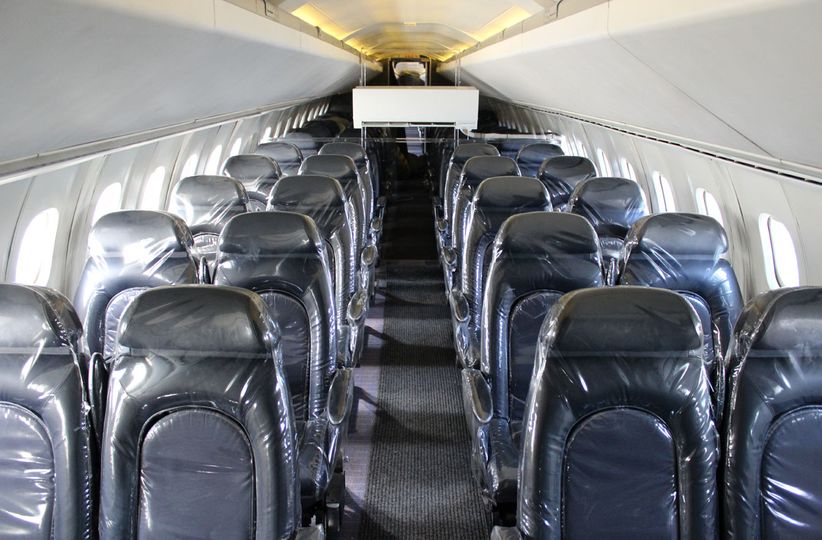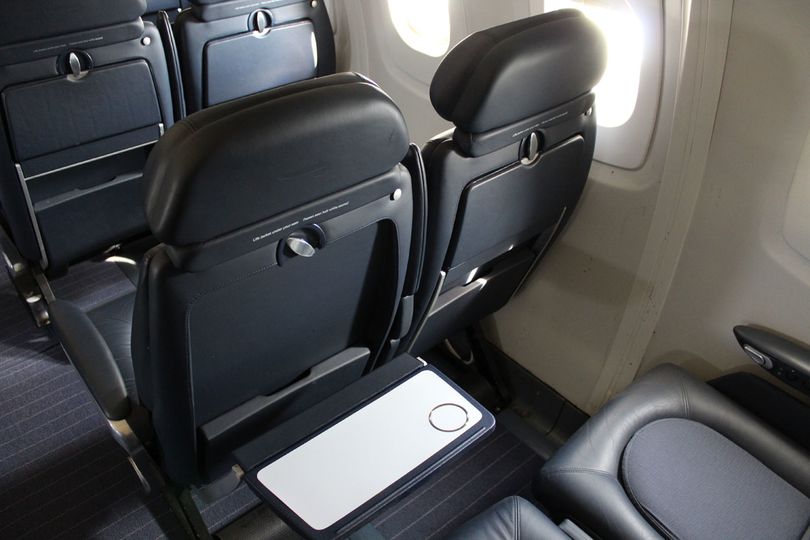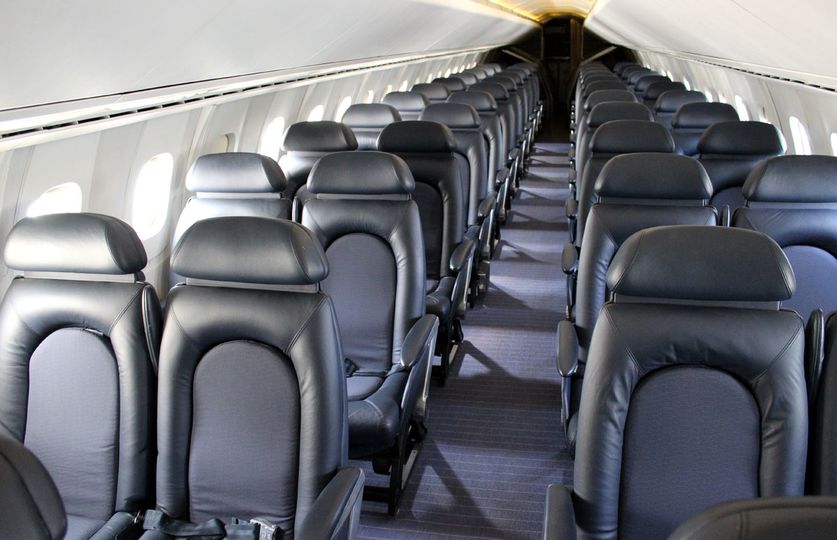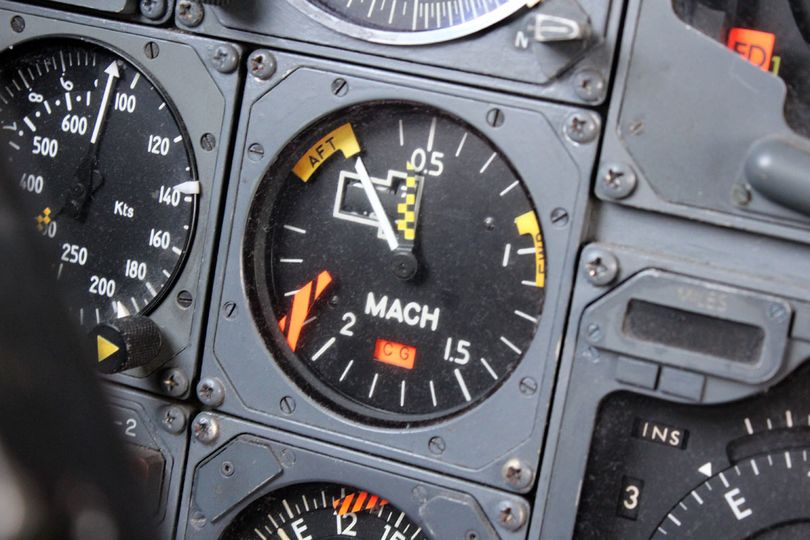Revisiting supersonic glory at New York’s Concorde tour
Join Executive Traveller on this ‘access all areas’ tour of the famous Concorde.

There are so many reasons to visit New York, with a dizzying array of sights to see and experiences to enjoy.
And for readers of Executive Traveller, a must-do would be visiting the Concorde at the Intrepid Sea, Air & Space Museum, on the west side of Manhattan and overlooking the Hudson River to New Jersey.
It’s not just about getting up close to this majestic marvel of engineering, which once soared between New York and London in barely three hours.
The Intrepid Museum’s Concorde Tour lets you step inside the supersonic jet to not only learn more about the technological innovations which made this extraordinary aircraft a part of history, but to close your eyes and briefly imagine what it would have been like as part of that elite jet set.
After all, for almost three decades from the mid-70s to 2003, the Concorde was the only way to fly.
And this particular Concorde – the British Airways speedbird known as Alpha Delta (after the final two letters of the aircraft’s G-BOAD registration) is positively draped in history.
One of only 14 Concordes ever in commercial service, she holds the record for the fastest Atlantic crossing – a feat accomplished in 1996 from New York’s JFK Airport to London Heathrow in a blistering 2 hours, 52 minutes and 59 seconds. That same journey today takes around 7 hours.
Behind the stick of this record-breaking flight was Captain Leslie Scott, whose autograph can be seen in the cockpit (beneath a reminder of that world record flight), alongside autographs of the crew from G-BOAD’s final flight on November 10, 2003.
For a time, this plane was also a Singapore Airlines Concorde – well, at least half of it was.
An ambitious partnership on the London-Singapore route from 1977 to 1980 saw the aircraft adorned with SQ’s iconic livery on the left side, while retaining British Airways stripe on the right.
Even allowing for a brief refuelling stop in Bahrain, the Concorde slashed travel time between London and the Lion City to around nine eight hours.
After her final flight from London to New York in November 2003, having clocked up a staggering 23,397 hours in the air, Concorde G-BOAD was moved by barge to Pier 86 of the Hudson River Park, home to the Intrepid Museum.
During a visit to New York, the Intrepid Museum hosted Executive Traveller on this special private tour of the Concorde, including parts of the aircraft normally closed to the public.
Beyond first class: Concorde Class
BA considered the Concorde experience as being beyond mere first class, and decreed the exclusive service level worthy of being christened Concorde Class.
Yet what strikes every first-time visitor to the Concorde is how small and, by today’s standards, how cramped the cabin feels.
BA’s Concordes had 100 seats – 40 in the front cabin and 60 in the rear – arranged in a 2-2 layout, and at first glance you’d be forgiven for thinking this was the economy cabin!
(Although with trans-Atlantic flights rarely longer than 3.5 hours, making them quicker than your average Sydney-Perth trek, lie-flat beds simply weren’t necessary. Besides: why sleep when you can party, as many guests seemed to do?)
Here’s the legroom in Row 1, which would usually carry bragging rights on your boarding pass.
There were swing-up footrests, which could be removed for a little more space to stretch out.
Further back there’s plenty of knee room, although this is more like today’s premium economy.
Row 1 passengers found tray tables folded down to unveil a seriously-sized dining space with plenty of room for the lobster and Champagne...
... and folded halfway, they made for a convenient cocktail table.
Away from the bulkheads, smaller and more conventional trays were the norm.
Concorde’s overhead bins are large enough to fit a slim bag, but would certainly struggle to accommodate today’s two- or four-wheeled cabin bags.
Visitors to the Concorde will also be struck by how small the windows are, although as the Intredpit Museum tour guide explains, this was a necessity of the aircraft’s supersonic design.
Screens at the front of each cabin informed passengers of the Concorde’s speed and altitude, along with the outside temperature.
The Intrepid Museum guide took us into the rear cabin – off-limits to the public, and normally seen only through a perspex screen – where the seats are without protective plastic covers, so everything is exactly as it was in those distant but dazzling days when the Concorde was flying.
These newer-style seats afforded passengers audio-based inflight entertainment with a selection of radio channels at their fingertips.
Inside the Concorde cockpit
The Intrepid Museum’s public tour of the Concorde also includes a visit to the flight deck.
Prospective aviators are welcome to sit in the jumpseat...
... and to stickybeak at the various dials, gauges and instruments, including the all-important Machmeter...
... and the lever to control the tilt of the Concorde's nose.
This was an essential control for the pilots, as the Concorde’s design ordinarily blocked their view of the tarmac below.
By way of example, here’s a view from the Concorde cockpit to New York with the nose raised in supersonic ‘cruise’ position.
Lowering the nose for taxi, take-off and on landing considerably improved safety and the pilots’ viewing angle to the ground.
Another detail shared by the tour guide: the Concorde’s reflective white paint wasn't merely a design choice by British Airways, or indeed by Air France for its own Concordes.
Instead, it helped prevent the aircraft from overheating at supersonic speeds by reducing its exterior temperature by 6-11°C – an impossible feat with a darker, heat-absorbing colour.
And while its wings are clipped, the Concorde today helps visitors avoid the heat by sheltering under it as they enjoy lunch.
The Concorde is one of several exhibitions at the Intrepid Museum, along with the namesake aircraft carrier USS Intrepid, the nuclear missile submarine Growler and the Space Shuttle Pavilion, home to NASA’s Enterprise orbiter which paved the way for the space shuttle program.
Originally planned to be named Constitution, the orbiter was christened Enterprise in honour of Star Trek.
Admission to the Intrepid Museum costs US$36 for adults and includes entry to the Intrepid, the Growler and the Space Shuttle Pavilion, with 20-minute guided Concorde Experience tours costing an additional US$11. For more details, visit the Intrepid Museum website.





























Qantas - Qantas Frequent Flyer
11 Apr 2016
Total posts 8
Back in the day (2003), I was fortunate to fly on G-BOAD return to LHR in under 3 hours thanks to a QFF redemption. To this day, it remains the best use of points I have ever made, by a large margin.
Qantas - Qantas Frequent Flyer - Chairmans Lounge
01 Sep 2011
Total posts 416
I was very fortunate to fly it on a number of occasions and it was just breathtaking. The fastest I did a crossing was 2hr56m and the slowest 3hr 23m. I was on the BA Concorde a week after the Air France disaster, and there were only 11 passengers on the plane. I got row 1. It was a glorious experience. The late David Frost would commute between LHR and JFK every week on it.
23 Jun 2020
Total posts 5
I went to this museum earlier this year. Unfortunately, I missed Concorde as it was taken away for maintenance.
The shuttle pavilion was also closed for repairs.
Its good to see both birds back in place !
27 Mar 2024
Total posts 1
Brings back such great memories, I have several certificates which I have given to my grandsons, I was on that flight the captain announced it as we landed. It was small but it was simply amazing, with its own departure lounge straight onto the aircraft it was style personified it was always full and often with the same people. Such a sad ending for a brilliant piece of engineering adventure.
28 Apr 2021
Total posts 32
London to Washington, D C in 2 hours 59 minutes on BA #5003 was a great thrill for us back in July 1991.
However the real 'buzz' was when we were invited to the flight deck and the Captain let us see the Polar Cap from the altitude of 66,500' above sea level and it was a totally remarkable experience that has stayed forever in our memory banks.
Will there ever be an equivalent of the Concorde?
18 Mar 2016
Total posts 39
I was fortunate to fly twice on Concorde. The experience lives in my mind.
The pressure being pressed into the seat at take off. The dial that told you the plane had reached Mach 2,followed by the cheers of the passengers.
I still have all the memorabilia given on the flights, a grey folder, pens, pads, menus etc.
Nothing comes near it.
18 Feb 2018
Total posts 18
I have many Concorde stories to tell but I do have a very fond memory of queuing for the toilet (yep, a fond memory queuing for a toilet), passing the time talking with two of the Gibb brothers (of the Bee Gees) about nothing in particular (they were regular commuters).... funny what memories spark a broad smile..... Terrific experience every time - Krug champagne, Hine Cognac Antique XO, superb food, terrific service by the most delightful cabin crew (who seemed to universally love their job) and getting to sit in the jump seat for the landing into JFK (twice). Awesome!
12 Sep 2024
Total posts 2
I had the chance to fly Heathrow to Singapore on this "bird". It was fabulous! Unforgettable experience! With all technologies abound, why can't we fly supersonic again?
Hi Guest, join in the discussion on Revisiting supersonic glory at New York’s Concorde tour